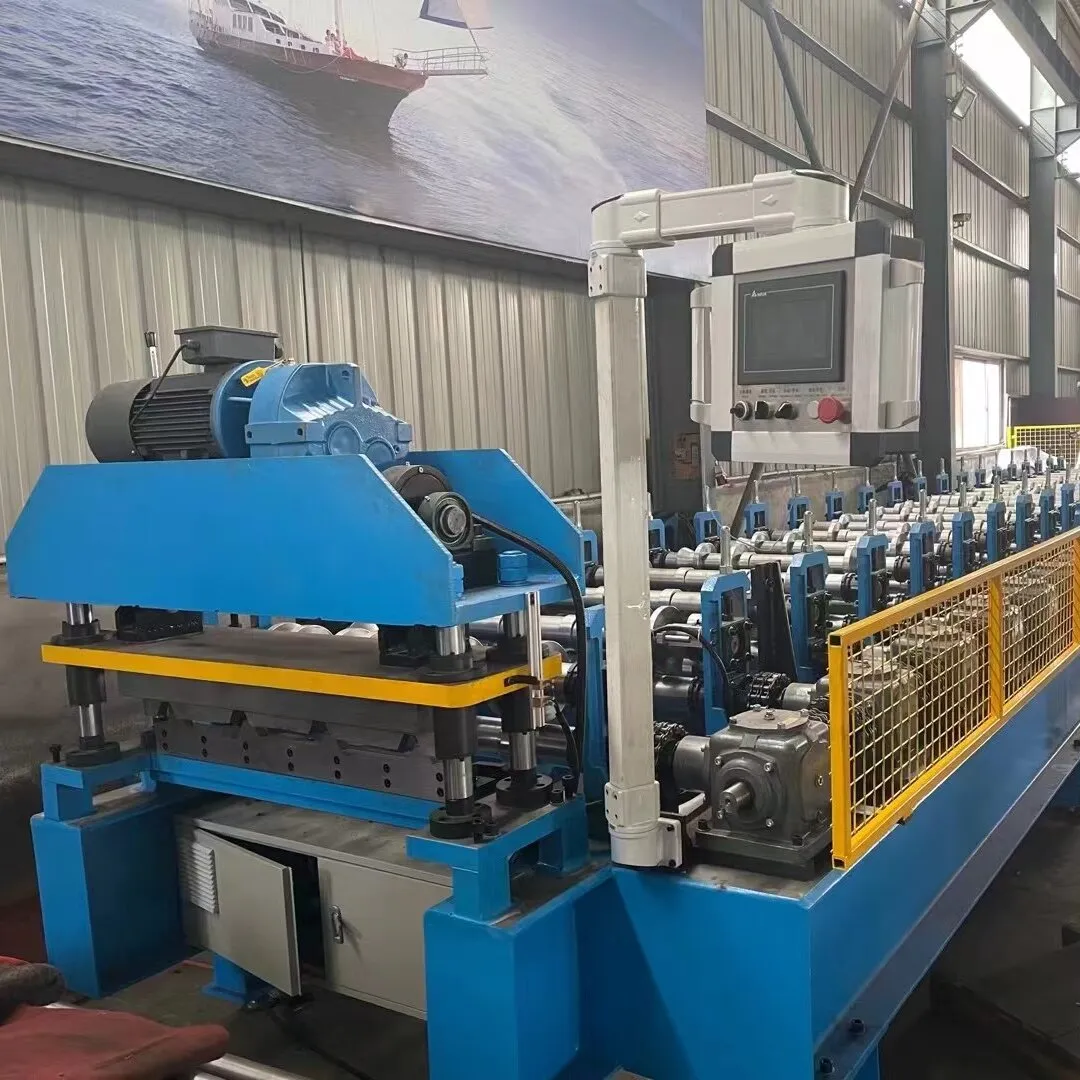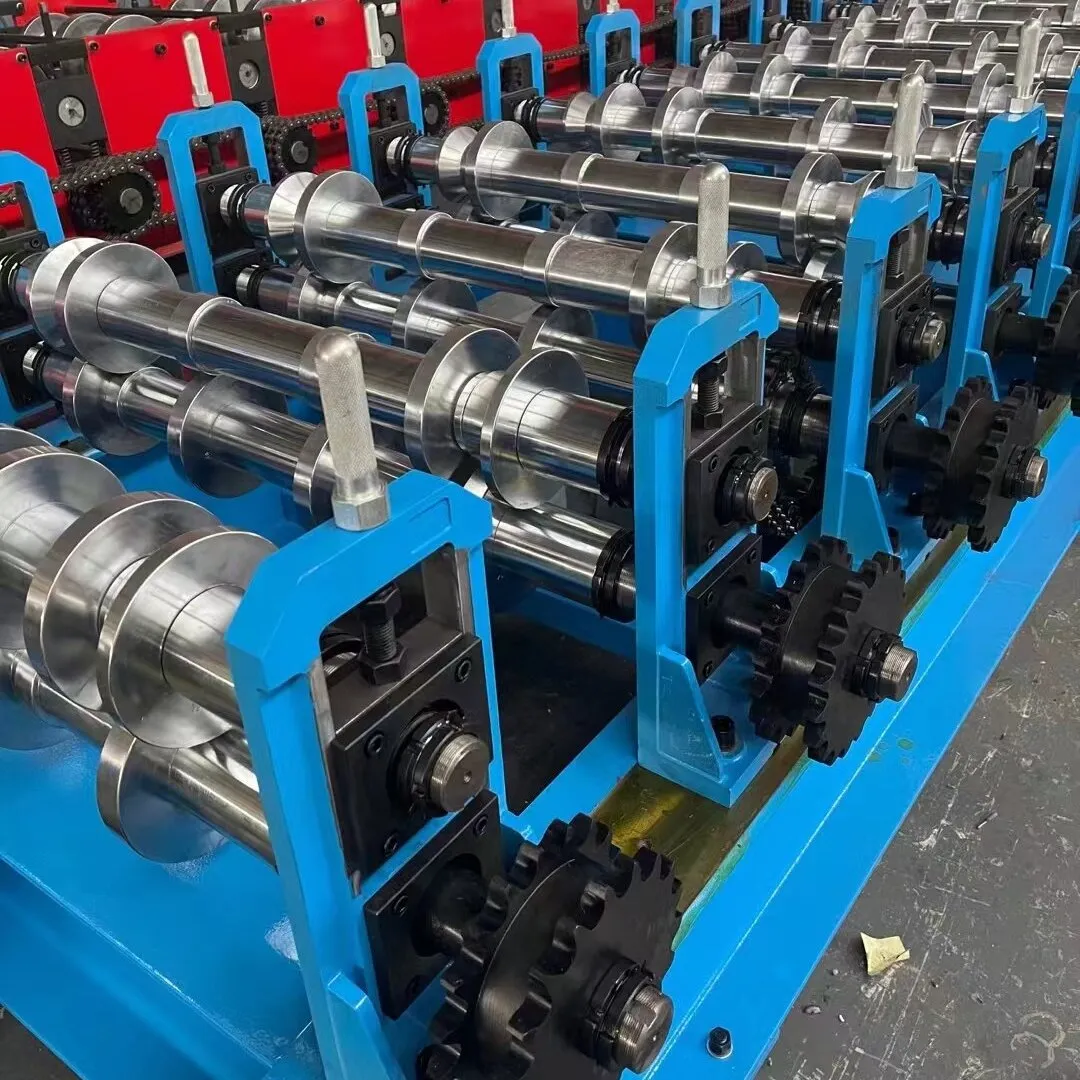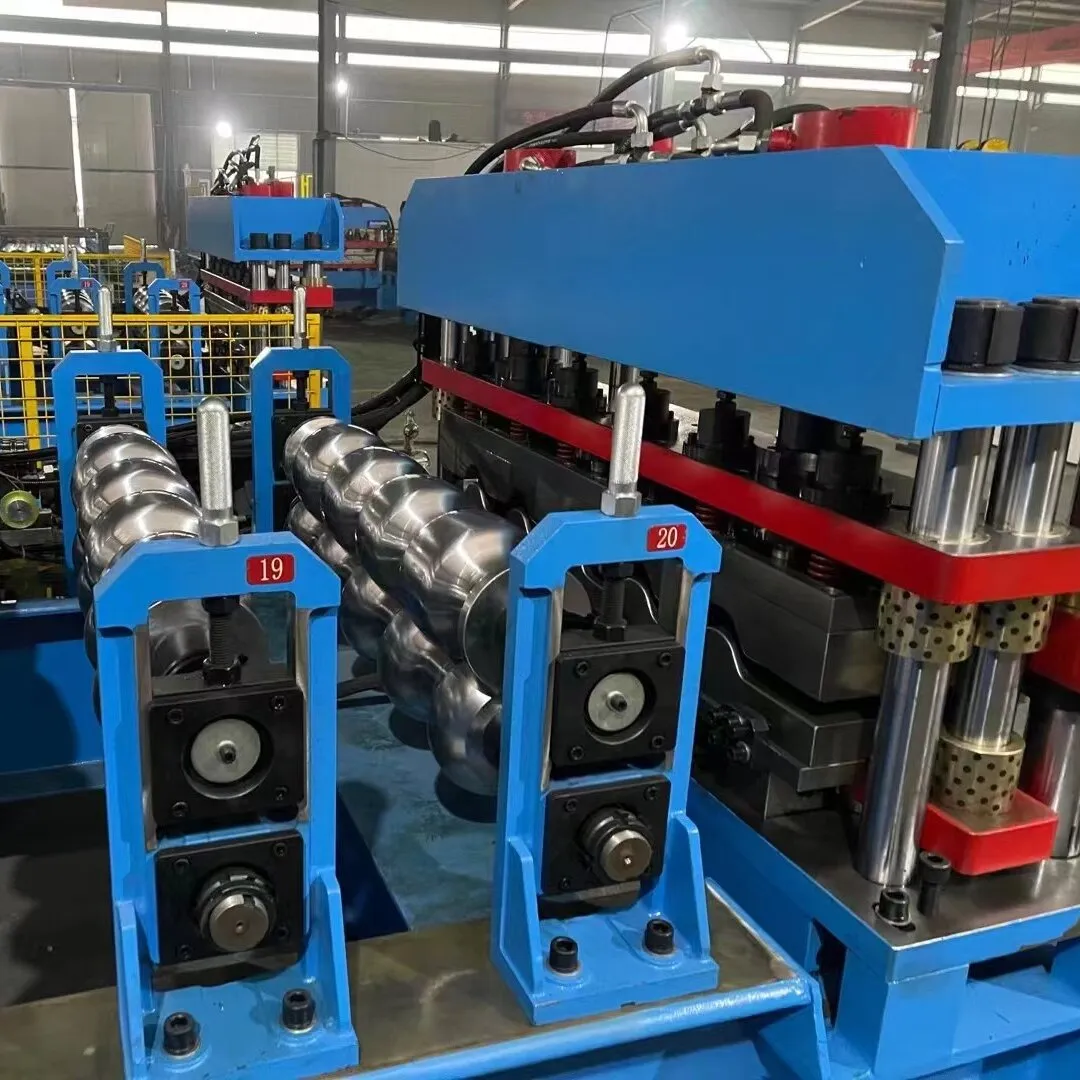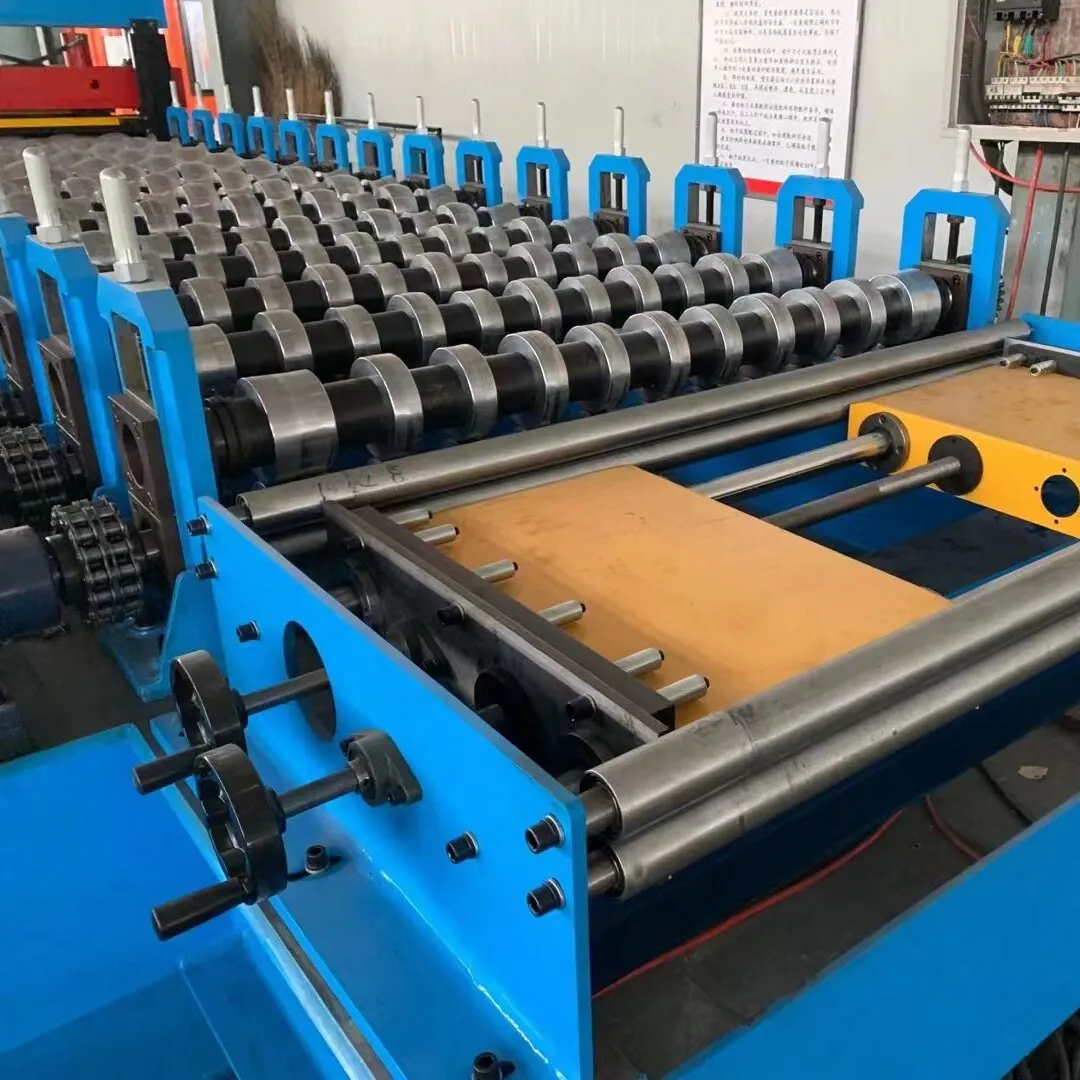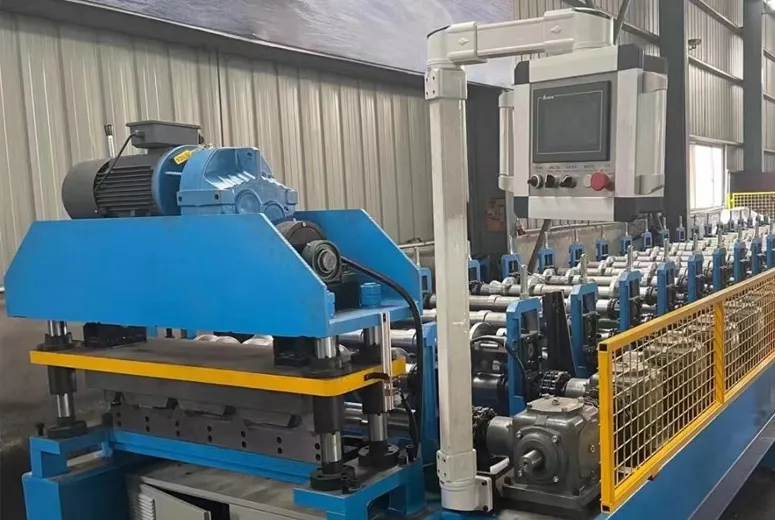
En rullformningsmaskin för takplåt med en växellåda är en specialiserad utrustning som används vid tillverkning av metalltakplåt. Växellådan är en integrerad komponent som hjälper till att kontrollera maskinens hastighet och vridmoment, vilket säkerställer exakt formning och formning av metallplåtarna när de passerar genom rullarna.
Dråar

Working Process

Komponent
| Manuel De-coiler | x1 set |
| Huvudrullformningsmaskin | x1 set |
| Hydrauliskt skärsystem | x1 set |
| Hydraulisk station | x1 set |
| PLC styrsystem | x1 set |
| Samlingsbord | x1 set |
Tekniska parametrar
Införandet av en växellåda i en rullformningsmaskin erbjuder flera fördelar:
1.Enhanced Torque: Gear boxes increase the torque output, allowing the machine to handle thicker or harder materials without compromising performance.
2.Speed Control: They provide better control over the speed of the rollers, ensuring uniformity in the thickness and shape of the produced sheets.
3.Durability: Gear boxes are designed to withstand heavy loads, which can extend the lifespan of the machine and reduce maintenance costs.
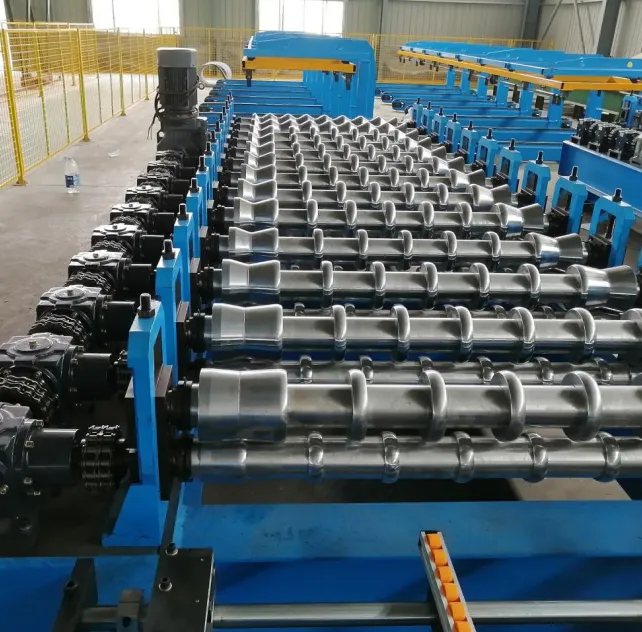
Takplåtsrullformningsmaskiner med växellådor kan producera en mängd olika takplåtsprofiler, inklusive:
1.Corrugated Sheets: Commonly used in agricultural and industrial buildings.
2.Tile Profiles: Designed to mimic traditional tile roofing for aesthetic purposes.
3.Flat Sheets: Used for various applications, including siding and interior panels.
Mångsidigheten hos dessa maskiner gör det möjligt för tillverkare att tillgodose olika marknadsbehov och preferenser.
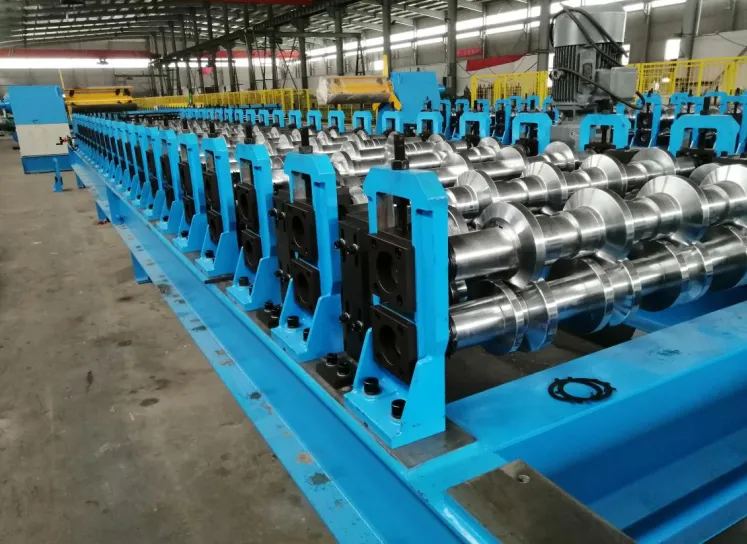
Roof sheet roll forming machines are typically designed to work with a variety of materials, including galvanized steel, aluminum, and other metal alloys. The specific material compatibility may vary depending on the machine’s design and specifications, so it’s important to consult the manufacturer for details.
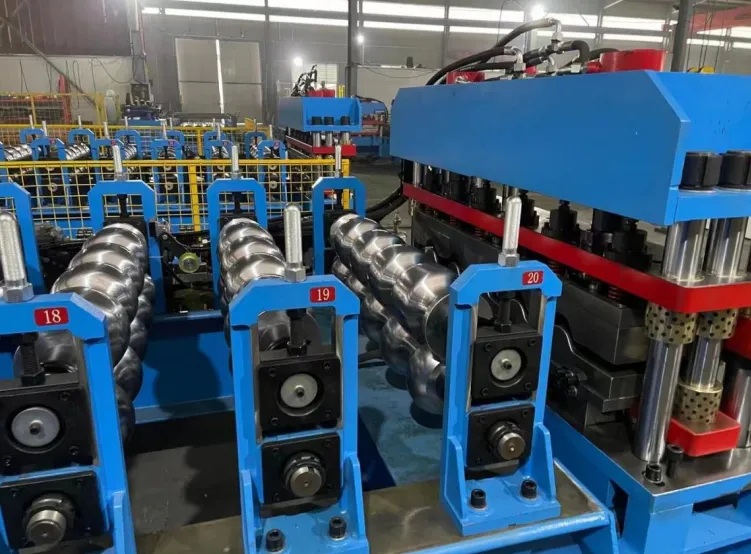
Regular maintenance is essential to ensure the longevity and optimal performance of a roof sheet roll forming machine. This includes routine inspections of the gear box for wear and tear, lubrication of moving parts, checking for alignment issues, and ensuring that all electrical components are functioning properly. Following the manufacturer’s maintenance guidelines will help prevent breakdowns and extend the machine’s lifespan.

